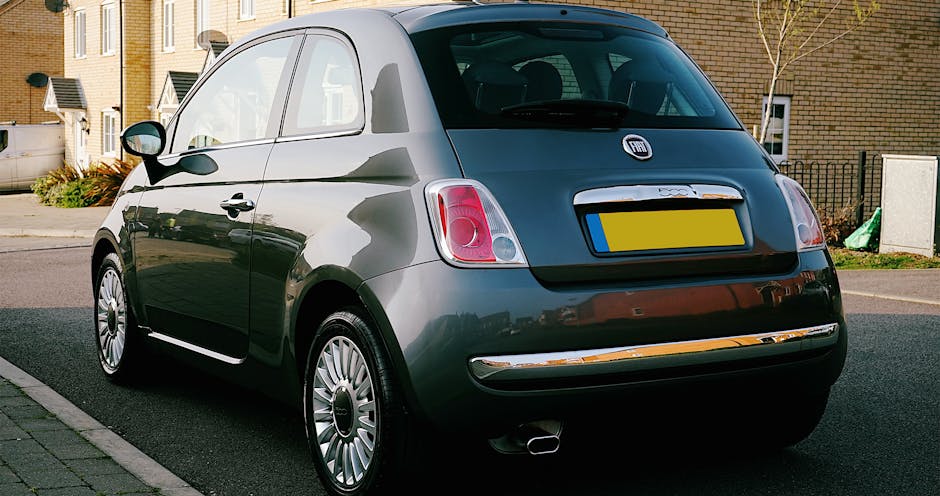Small EVs for Urban Driving: Efficiency Meets Style
In bustling urban areas, the need for compact and efficient transportation solutions has grown significantly. With city streets becoming increasingly crowded and the environmental impact of traditional fuel-powered vehicles raising concerns, small electric vehicles (EVs) are stepping in to provide a modern, stylish, and sustainable answer.

These nimble cars are designed to handle the unique challenges of urban driving while offering a blend of convenience and sophistication that appeals to a wide range of consumers.
The Benefits of Small EVs for Urban Driving
Small EVs bring several advantages to urban dwellers, addressing common challenges such as traffic congestion, limited parking, and environmental sustainability. One key benefit is their compact size, which makes them ideal for navigating tight city streets and fitting into scarce parking spaces. These vehicles are purposefully designed to excel in environments where space is at a premium.
Another significant advantage is their eco-friendliness. Small EVs produce zero tailpipe emissions, making them an excellent choice for environmentally conscious drivers. In cities that enforce low-emission zones or congestion charges, owning an electric vehicle can result in considerable cost savings. According to the European Environment Agency (eea.europa.eu), switching to electric mobility could play a vital role in reducing urban air pollution.
Small EVs tend to have lower operating costs compared to traditional internal combustion engine vehicles. Electricity is generally cheaper than gasoline or diesel, and maintenance costs are reduced due to fewer moving parts. For city residents who face daily commutes or frequent short trips, these savings can add up quickly over time.
Design Innovations: Where Efficiency Meets Style
Gone are the days when eco-friendly cars were considered dull or uninspired. Modern small EVs combine advanced engineering with sleek design elements, ensuring they turn heads while meeting functional needs. Manufacturers understand that style plays an essential role in attracting buyers, especially among younger audiences who value aesthetics as much as performance.
Take the Fiat 500e or the Mini Electric as examples, both models showcase how classic designs can be adapted into electric versions without compromising on visual appeal. These vehicles offer vibrant color options, customizable interiors, and smart technology integrations that cater to tech-savvy drivers.
Another notable innovation is the integration of smart features such as regenerative braking systems, smartphone connectivity, and autonomous driving capabilities in some models. Tesla’s Model 3 provides an array of high-tech features even in its compact form factor. Such advancements highlight how manufacturers are pushing boundaries to create small EVs that are not only practical but also desirable lifestyle choices.
Performance and Range: Meeting Urban Needs
One common concern among potential EV buyers is range anxiety, the fear that the vehicle's battery will run out before reaching its destination. Small EVs designed for urban use often come with ranges tailored to city driving patterns. Most daily commutes fall well within the range capabilities of these vehicles.
The Nissan Leaf offers a range of approximately 150 miles on a single charge, which is more than sufficient for typical urban travel. Similarly, the Honda e provides a range of around 125 miles while maintaining its focus on style and user-friendly features.
The charging infrastructure in cities has also improved dramatically over recent years. Public charging stations are becoming more prevalent, and many owners install home chargers for added convenience. Fast-charging options further reduce downtime, allowing drivers to recharge quickly during short stops. According to a report by BloombergNEF (bnef.com), the number of public charging points worldwide has increased substantially since 2015, making EV ownership more practical than ever before.
A Comparison of Popular Small EV Models
| Model | Range (miles) | Starting Price (USD) | Key Feature |
|---|---|---|---|
| Fiat 500e | 199 | $34,000 | Compact design with retro styling |
| Mini Electric | 114 | $30,000 | Iconic design with advanced tech features |
| Nissan Leaf | 150 | $28,000 | Affordable with practical range |
| Tesla Model 3 (Standard) | 272 | $40,000 | High-tech features with superior performance |
| Honda e | 125 | $38,000 | Sleek design with urban-focused functionality |
The Road Ahead for Small EVs in Urban Areas
The adoption of small EVs continues to gain momentum as cities around the world implement policies aimed at reducing carbon footprints and promoting sustainable transportation options. Governments are offering incentives such as tax breaks and subsidies to encourage consumers to make the switch from traditional vehicles to electric ones.
Cities are also investing in infrastructure development to support EV growth. From building more public charging stations to incorporating EV-friendly policies like free parking or exclusive lanes for electric cars, urban areas are becoming more accommodating for electric mobility solutions.
The automotive industry is responding by introducing new models at varying price points to cater to different consumer needs and budgets. As battery technology improves and manufacturing costs decrease, small EVs are expected to become even more accessible in the coming years.
This shift not only benefits individual consumers but also contributes significantly toward creating cleaner cities with improved air quality, a goal shared by governments and communities worldwide.
The rise of small EVs represents more than just a trend; it signals a shift in how people approach transportation within urban settings. Their combination of efficiency, style, and practicality makes them an ideal choice for those looking to navigate city life responsibly while maintaining a sense of individuality.
As you consider whether a small electric vehicle fits your lifestyle or commuting needs, reflect on how these cars align with your values (be it sustainability, cost-efficiency, or aesthetics) and explore what they can offer beyond just transportation.
